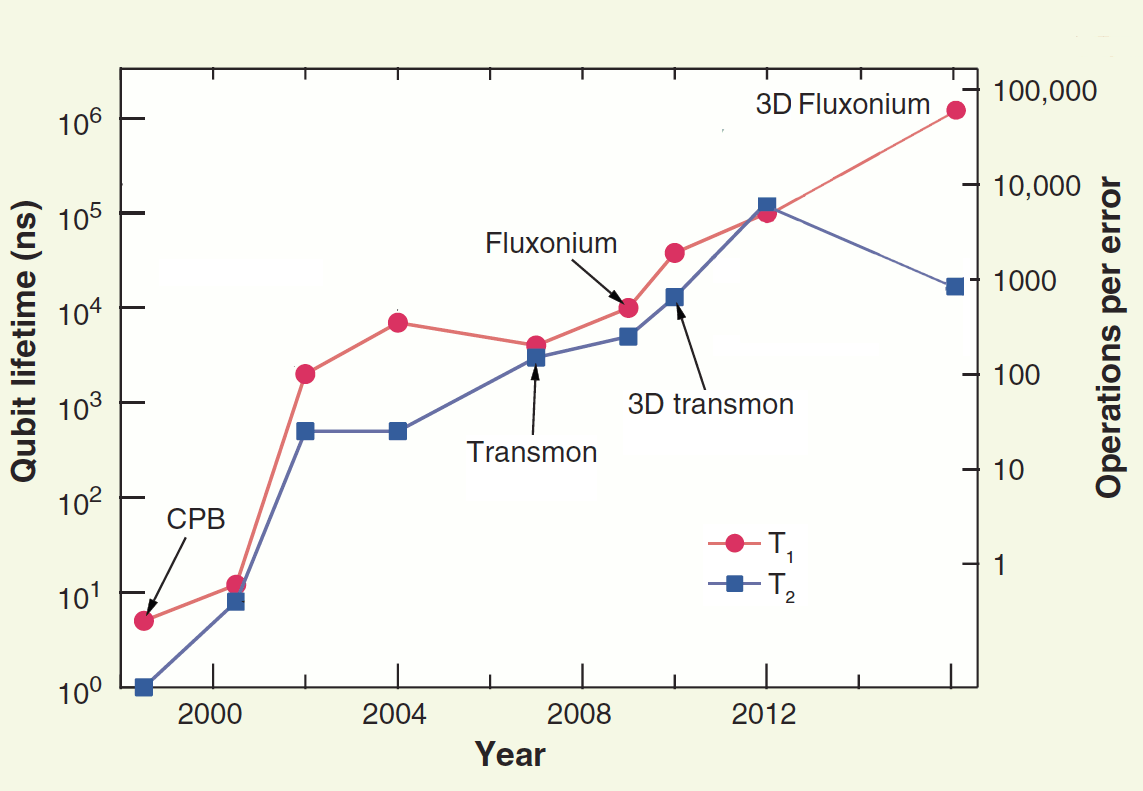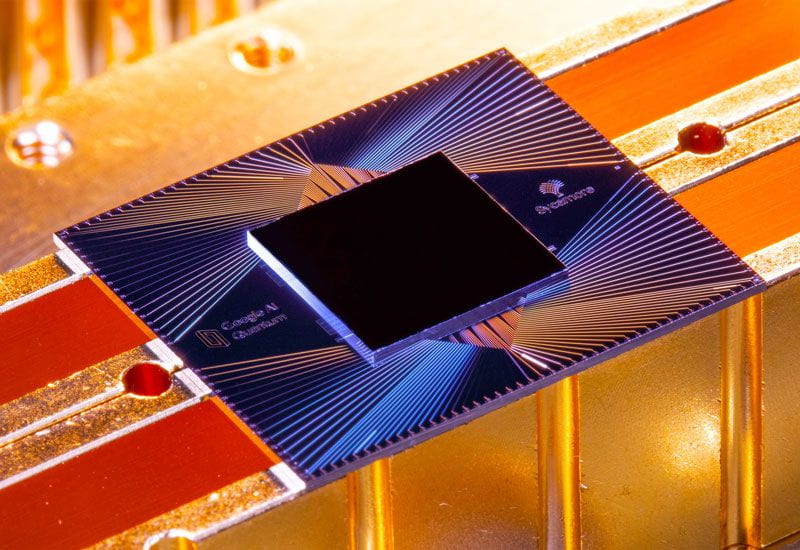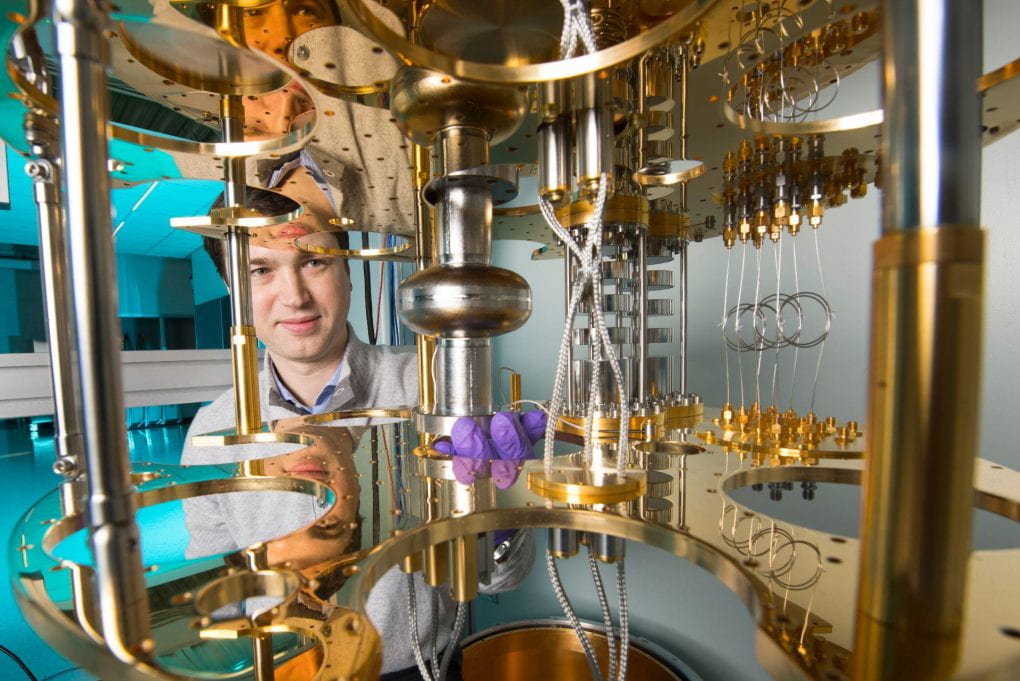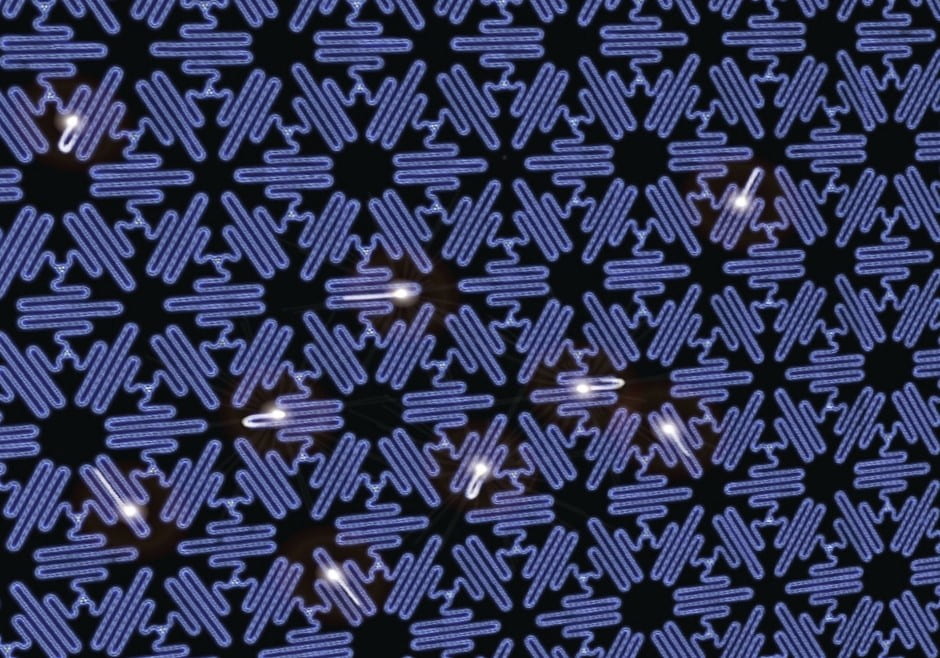CAPST research is at the forefront of superconducting technologies for applications ranging from quantum computing and quantum simulation to dark matter detection.
Superconducting quantum circuits are leading technology platforms for quantum computing, quantum simulation and quantum sensing. Left: Fluxonium qubit. Credit: Jens Koch (Northwestern), Right: SRF cavities for 3D transmon qubits in a BlueFors sub-10 mK cryogenic machine. Credit: Alex Romanenko (Fermilab).
Breakthroughs in superconducting qubit technology
The development of the Transmon qubit by Jens Koch and colleagues at Yale was the breakthrough that led to superconducting qubits as the leading technology for the realization of computers based on quantum logic elements (qubits). A key performance measure is the coherence time of the qubit. Quantum computers promise unparalleled speed in solving computationally hard problems. The evolution of qubit performance is shown in the figure at right.
Quantum computers gain advantage by performing computations using the intrinsic parallel computational nature of entangled qubits. A single qubit can perform twice as many operations as a classical bit. For N entangled qubits the computational power is multiplicative, i.e. 2N. A landmark paper published in Nature reported “Quantum Supremacy’’ by a quantum computer with 53 Transmon qubits, performing computations in about two and a half minutes that are projected to take 10,000 years on the Summit Supercomputer at Oak Ridge National Laboratory.
Google’s report of Quantum Supremacy is not without uncertainty. IBM-Q weighed in with a report published in the New York Times, “Quantum Computing Is Coming, Bit by Qubit’’. IBM, which is committed to R&D on Quantum Computing, argues that a different classical algorithm, if run on the Oak Ridge Summit machine, would perform the same calculation in 2 and a half days, not 10K years. There is much to be done in testing and verifying the Google AI report, but even if IBM’s algorithm is correctly benchmarked, the Google result, if verified, is a landmark achievement, i.e. 1000-fold increase in computational speed over the best Supercomputer in the US by a quantum computer with only 53 Qubits.
The Coherence Frontier
A central challenge in developing quantum computers that out perform any classical computer increasing the coherence times of superconducting qubits. Increasing coherence times increases the number of computations without error correction and reduces the timescale for reaching key benchmarks for quantum supremacy for functional quantum computation. CAPST researchers are pursuing experimental and theoretical research to improve coherence times of superconducting qubits.
CAPST researchers at Fermilab, led by Alex Romanenko and Anna Grassellino, are coupling state of the art microwave resonators (Niobium SRF cavities) with the longest coherence times (> 2 seconds) for quantum states of microwave photons with Josephson junctions to produce 3D quantum circuits with the long coherence times. [Read More]
Research in Jens Koch’s group focuses on the theory, simulation, and advancement of hardware for quantum computing and quantum simulation using superconducting circuits and microwave photons. Koch’s expertise in superconducting qubits and circuit QED reaches back to the development of the original theory for the transmon and fluxonium qubits. Together with experimental collaborators, his group now works on next-generation quantum circuits with enhanced error protection, on devising protocols for gate operations and quantum-state readout, and on quantum simulation based on interacting photons in circuit-QED arrays.
With support of CAPST, the Koch group is newly engaged in a collaboration with researchers at Fermilab, pioneering the coupling of superconducting qubits to SRF cavities with record-breaking quality factors. [Koch Research Group]


 Google’s Sycamore chip is composed of 53 Transmon qubits. Nature, Credit: Erik Lucero
Google’s Sycamore chip is composed of 53 Transmon qubits. Nature, Credit: Erik Lucero
